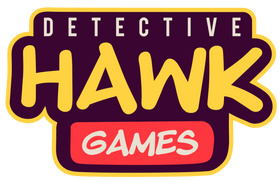
Undergrove Review
Undergrove Review
We're back writing reviews and we have a great one for you today! We recently played Undergrove from AEG. This game is designed by Elizabeth Hargrave and Mark Wooton. It's for ages 10 and up, takes 60-90 minutes to play and is for 1-4 players. Let's get into this fascinating game!
Game Overview
Each player takes on the role of a Douglas Fir Tree in the Pacific Northwest. The goal is to spread your roots through the forest by performing a variety of actions. These actions involve adding new mushrooms to the forest each with a special skill to help you advance toward the goal. The winner is the player who scored the most victory points throught the game.
Game Components
Now our review will be a little unfair in this area as we backed the Kickstarter for this which produced all the components in wood and in high quality game boards. We are incredibly impressed with the level of craftmanship that went into the Kickstarter version. The board tiles each represent one Mushroom type. They were each about 1/4 inch thick and the excellent graphic design was provided by Beth Sobel. Along with the tiles, the game also came with wooden cubes representing the four essential elements (Cartbon, Potassium, Phosphorus, and Nitrogen) which are placed in a shared supply. The kickstarter even came with boxes for each of these to hold them during play.
Each player also gets their own box of roots, seedlings and four trees along with a player board that helpfully explains each action and gives you a space to place the elemental cubes you've ganed for each. It is incredibly well thought out.
Game Setup
For our first game, we followed the Quick Sprout (Quick Start) Guide provided in the game. This is unique to all four players and helps to explain the rules by showing vs by reading and explaining.
The setup itself though was fairly easy. Each player takes a player board, three mushroom tiles (those are assigned in the Quick Sprout or random in a real game), their player box with the seedlings, roots and trees and a handful of each element to get them started.
Then you are ready to play!
Gameplay
So how does this game play, at first I'll be honest I was confused by the steps we took in the Quick Sprout Guide, but I think it was simply because it was introducing so many different concepts. Like other games designed by Elizabeth Hargrave and Mark Wooton, there are many paths to victory and the game intentionally makes it difficult to know who is winning at any point in time. One of the things we liked about this game was the interactivity between players. If you have ever played Wingspan, you'll know that essentially each player is playing their own game on their own board, using the common supply. There is nothing a player can do to hinder another directly in the game, making it a very light competitive game. In Undergrove, I'd say it's more fo a medium competitive game where the players place down mushroom tiles and the layout affects other players abilities to achieve the final goal.
The goals also change based on the game setup. The ultimate goal is to be the first to reach the end of the Carbon track board, however all that does is ends the game. When we played, Tan, my partner and planned out 4 or 5 turns ahead but I ended the game by crossing the carbon track end line before she could execute. The funny thing is she thought she had lost, but when tallying up the points, we realized she had scored 6 more points overall.
The game is fun when you get right into it. Usually the way I play board games is to pick a strategy early on and try to make it pay off. In this case I came up short but it was still enjoyable!
Overall Impressions
We're definately keeping this game on the table for a bit. We really enjoy the competitive nature of the game, it's not full on "I'm going to win, everyone else loses" but it is a nice relaxing competitive game! We highly recommend you check it out! Click here to get to the game on our store!
